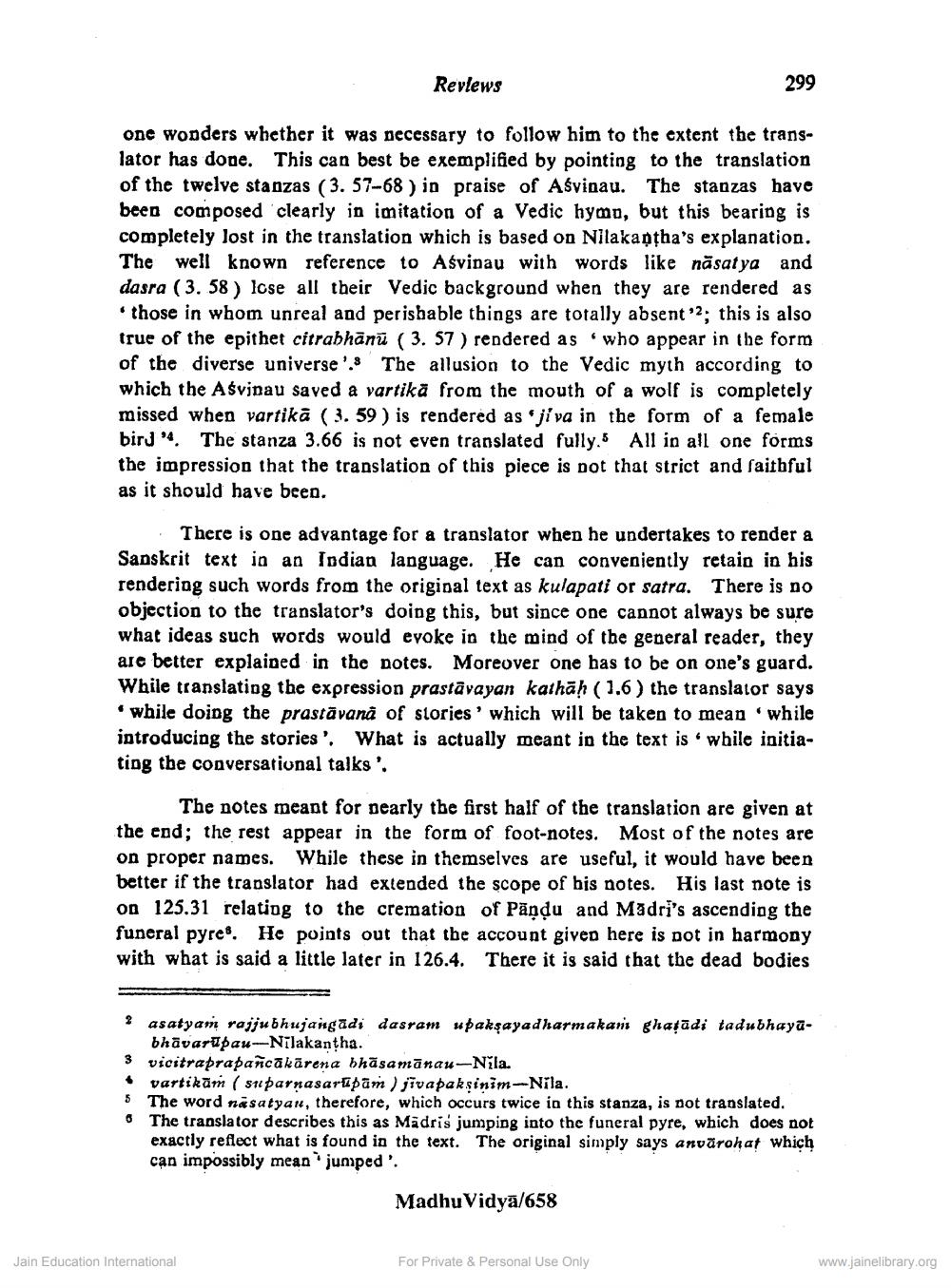________________
Revlews
299
one wonders whether it was necessary to follow him to the extent the translator has done. This can best be exemplified by pointing to the translation of the twelve stanzas (3. 57-68 ) in praise of Asyinau. The stanzas have been composed clearly in imitation of a Vedic hymn, but this bearing is completely lost in the translation which is based on Nilakaotha's explanation. The well known reference to Aśvinau with words like näsatya and dasra (3. 58 ) lose all their Vedic background when they are rendered as
those in whom unreal and perishable things are totally absent 2; this is also true of the epithet citrabhānū (3. 57 ) rendered as who appear in the form of the diverse universe'. The allusion to the Vedic myth according to which the Asvinau saved a vartika from the mouth of a wolf is completely missed when vartika (3. 59 ) is rendered as 'jiva in the form of a female bird '4. The stanza 3.66 is not even translated fully.5 All in all one forms the impression that the translation of this piece is not that strict and faithful as it should have been.
There is one advantage for a translator when he undertakes to render a Sanskrit text in an Indian language. He can conveniently retain in his rendering such words from the original text as kulapati or satra. There is no objection to the translator's doing this, but since one cannot always be sure what ideas such words would evoke in the mind of the general reader, they are better explained in the notes. Moreover one has to be on one's guard. While translating the expression prastāvayan kathāh (1.6) the translator says . while doing the prastāvana of stories' which will be taken to mean while introducing the stories'. What is actually meant in the text is while initiating the conversational talks'.
The notes meant for nearly the first half of the translation are given at the end; the rest appear in the form of foot-notes. Most of the notes are on proper names. While these in themselves are useful, it would have been better if the translator had extended the scope of his notes. His last note is on 125.31 relating to the cremation of Pandu and Madri's ascending the funeral pyre. He points out that the account given here is not in harmony with what is said a little later in 126.4. There it is said that the dead bodies
asatyam rajjubhujangadi dasram upakşayadharmakan ghatādi tadubhaya
bhāvar pau--Nīlakantha. 3 vicitraprapancakārena bhāsamānau-Nila.
vartikām ( suparnasarapam ) jivapaksinim-Nila. 5 The word näsatyaut, therefore, which occurs twice in this stanza, is not translated.
The translator describes this as Madris jumping into the funcral pyre, which does not exactly reflect what is found in the text. The original simply says anvärohat which can impossibly mean jumped'.
Madhu Vidyā/658
Jain Education International
For Private & Personal Use Only
www.jainelibrary.org




